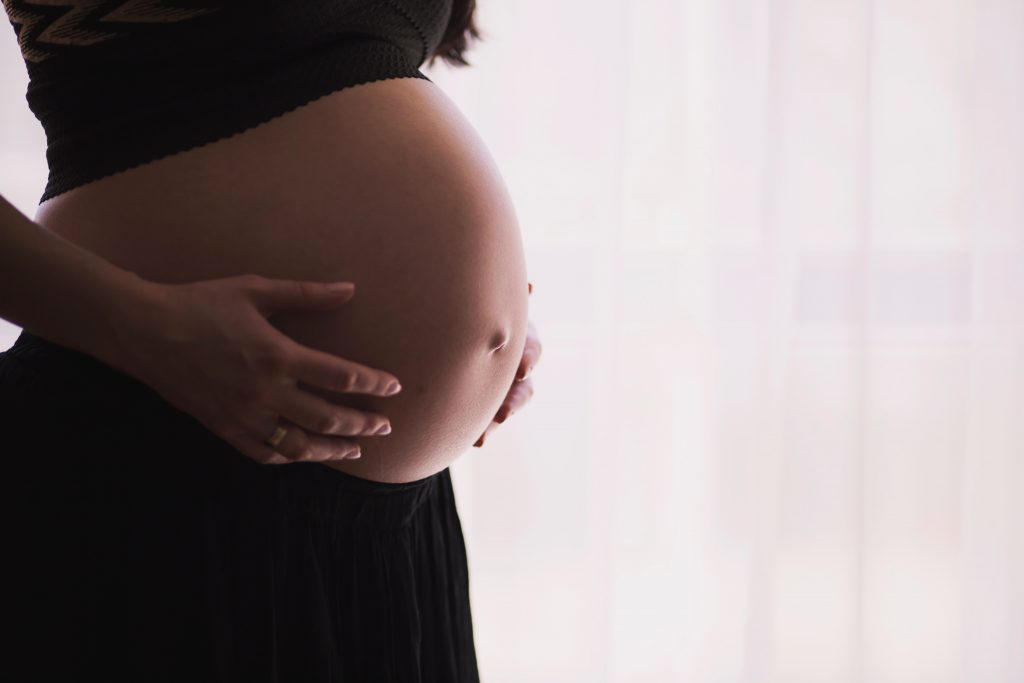If you’re in the third trimester of your pregnancy, the finish line is right around the corner. Every trimester brings its own set of challenges, and the third trimester is no different. When you know what to expect during your last trimester, you can have peace of mind and feel prepared for what’s to come.

What to Expect During the Third Trimester
At the beginning of your third trimester, it’s normal to experience an increase in fetal activity, including kicks, rolls, wriggles, and fluttering movements.
Other common side-effects associated with the third trimester include:
- Heartburn
- Fatigue
- Abdominal pain
- Braxton-Hix contractions
- Varicose veins
- Stretch marks
- Leaky breasts
- Lack of bladder control
Many pregnant women may also experience vivid or frightening dreams. As you get closer to your due date, the production of pregnancy hormones increases, affecting the way your brain works during sleep.
What aspects of fetal development occur during the third trimester of pregnancy?
The third trimester of your pregnancy occurs from week 28 until the time you give birth. Over the course of these three months, your baby grows significantly, from about two and a half pounds to between six and nine pounds.
In addition, your baby develops:
- Bones
- Hair, skin, and nails
- Its digestive system
- Brain
Your baby also changes position. Typically, around week 34, the baby drops into your uterus. When this occurs, your baby settles into a head-down, bottom-up position. If your baby remains upright (in a breech position), your primary care physician or OB/GYN might manually turn them in order to prepare for birth. To confirm this, you may request for a pregnancy scan.
How many prenatal visits occur during the third trimester of pregnancy?
In the first and second trimester of pregnancy, prenatal visits are spread out. During this time, your physician might recommend non-invasive prenatal testing (NIPT). NIPT is a quick, pain-free blood test that can determine your baby’s risk of various chromosome abnormalities like Down syndrome or Edwards syndrome. NIPT can still offer accurate results during the third trimester.
During the third trimester of pregnancy, visits to your primary care physician or OB/GYN will increase. During this time, you will be seeing your doctor every two weeks until week 36. After that, you visit the doctor once a week.
At each appointment, your provider will:
- Takes your blood pressure
- Examines your cervix
- Checks your weight
- Adjusts your diet as necessary
What else should I do during the third trimester of pregnancy?
Preparing for a newborn requires plenty of planning. To make the process as stress-free as possible you can:
Take a hospital tour. Where do you plan on giving birth? At a birthing center or the hospital? Around month seven, you can schedule a tour of the facility so that you know what to expect when the big day comes.
Select a pediatrician. A pediatrician is a medical doctor who specializes in caring for infants and children. During week 32 of your pregnancy, start interviewing potential candidates. If you aren’t sure where to begin, ask your friends, family members, or co-workers for recommendations.
Take a childbirth class. A childbirth class can teach you how to prepare for labor and delivery. It covers various topics, including techniques to relax, labor positions, pain relief options, and what to expect.
These are just a few of the things you can expect during the third trimester of pregnancy. If you have any questions or concerns during this exciting time, contact your primary care physician or OB/GYN.
















Add Your Comment